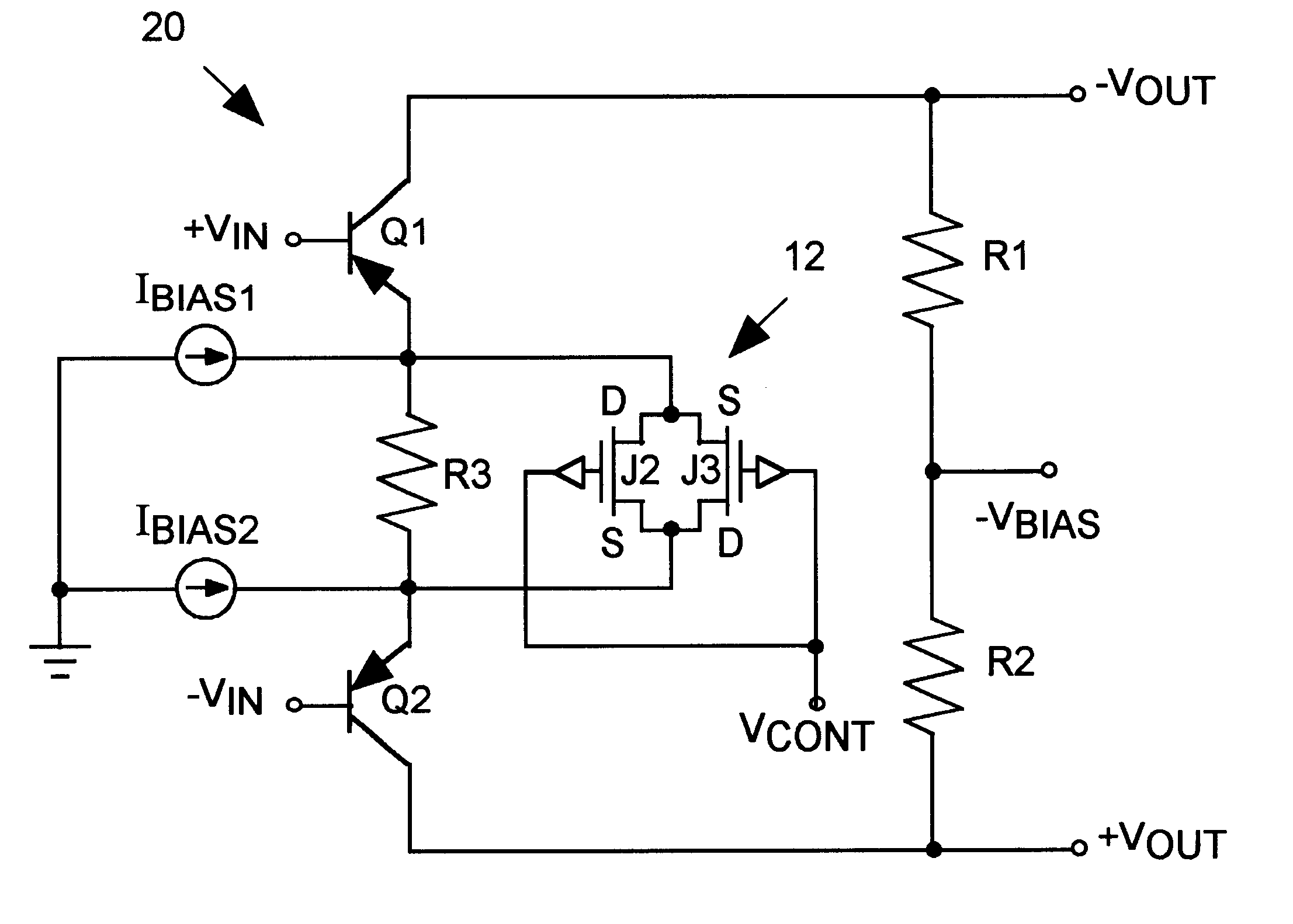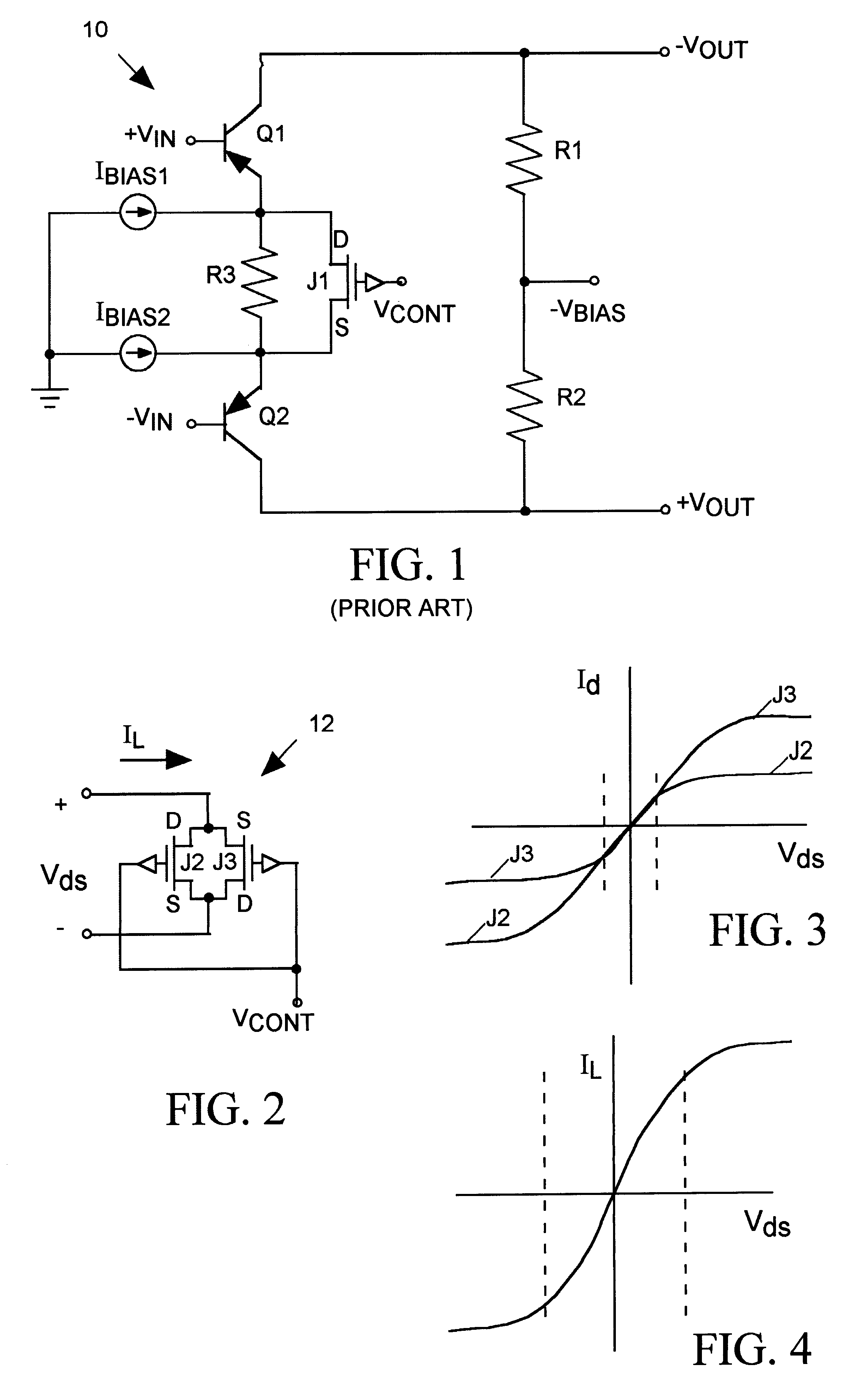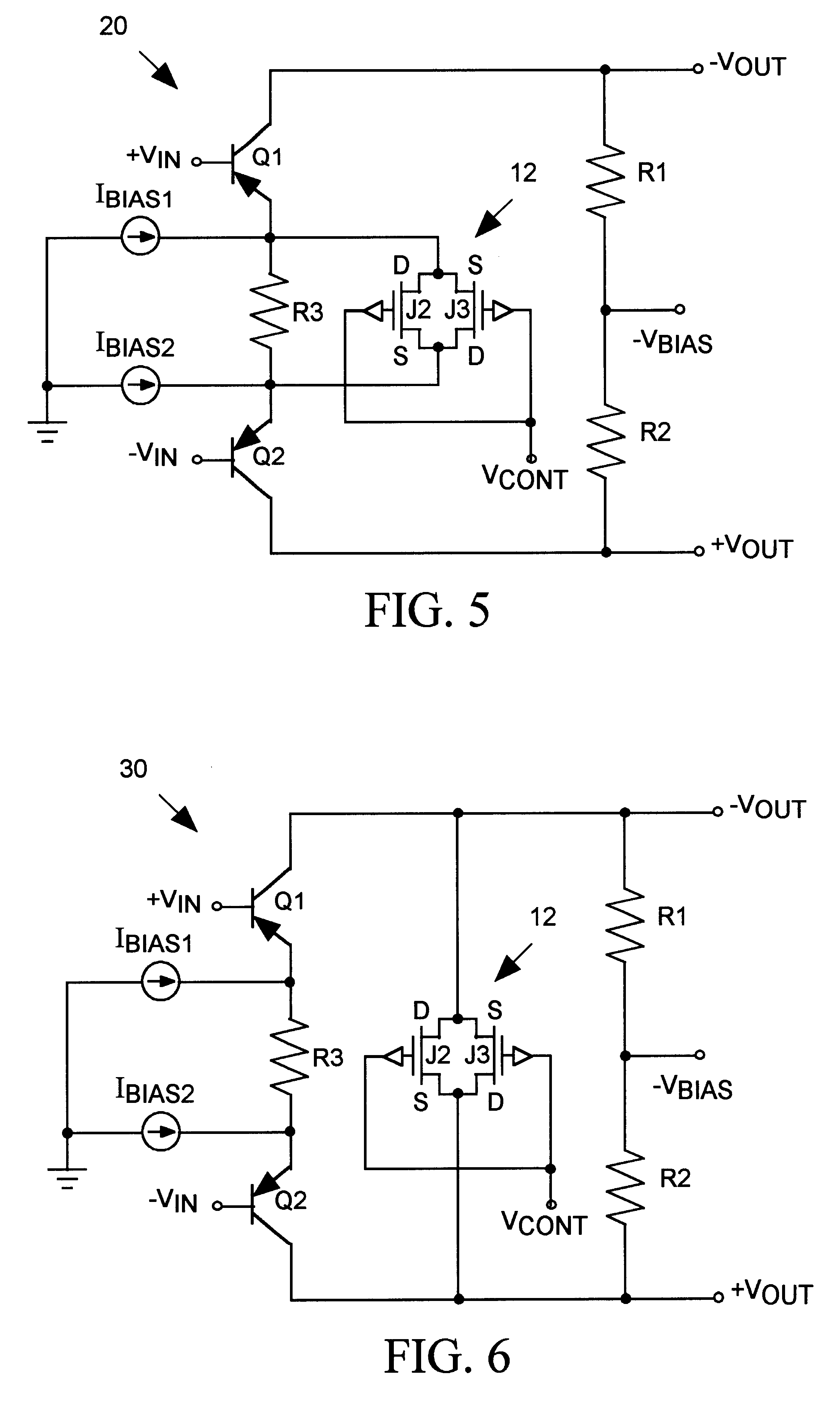FET-based, linear voltage-controlled resistor for wide-band gain control circuit
a wide-band gain control and linear technology, applied in the field of field-effect transistors, can solve the problems of non-zero common mode voltage, signal distortion in output signal v.sub.out through over-peaking, and gain control circuit of fig. 1 with significant limitations
- Summary
- Abstract
- Description
- Claims
- Application Information
AI Technical Summary
Problems solved by technology
Method used
Image
Examples
Embodiment Construction
)
Dual FET Voltage-controlled Resistor
As illustrated in FIG. 2, a voltage-controlled resistor 12 in accordance with the invention is formed by two similar asymmetric field effect transistors (FETs) J2 and J3 connected drain-to-source. A control signal V.sub.CONT applied to the gates of FETs J2 and J3 controls their channel conductance, thereby controlling the relationship between a load current I.sub.L flowing through FETs J2 and J3 and a voltage V.sub.ds applied across their drain and sources terminals.
FIG. 3 plots of the drain currents I.sub.d of asymmetric transistors J2 and J3 as functions of V.sub.ds for some fixed voltage magnitude of control signal V.sub.CONT. We can see that the relationship between I.sub.d and V.sub.ds for each FET J2 and J3 is both linear and symmetrical, but only over a relatively narrow range of V.sub.ds about the V.sub.ds =0 axis.
FIG. 4 illustrates the load current I.sub.L of FIG. 2, the sum of the drain currents I.sub.d of transistors J2 and J3, as a fu...
PUM
 Login to View More
Login to View More Abstract
Description
Claims
Application Information
 Login to View More
Login to View More - R&D
- Intellectual Property
- Life Sciences
- Materials
- Tech Scout
- Unparalleled Data Quality
- Higher Quality Content
- 60% Fewer Hallucinations
Browse by: Latest US Patents, China's latest patents, Technical Efficacy Thesaurus, Application Domain, Technology Topic, Popular Technical Reports.
© 2025 PatSnap. All rights reserved.Legal|Privacy policy|Modern Slavery Act Transparency Statement|Sitemap|About US| Contact US: help@patsnap.com



